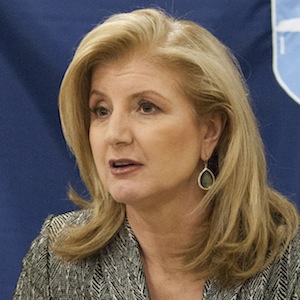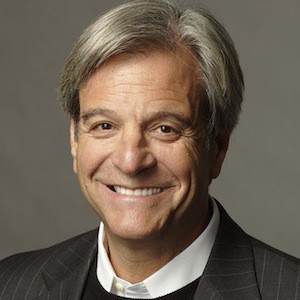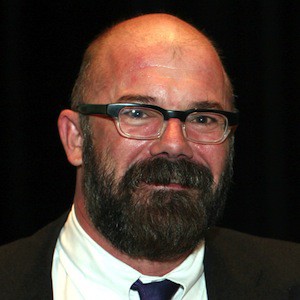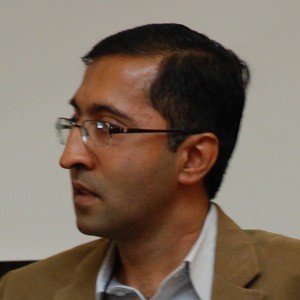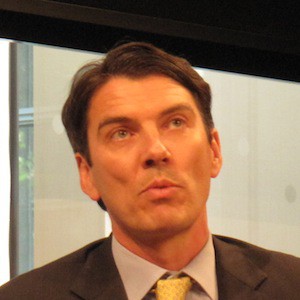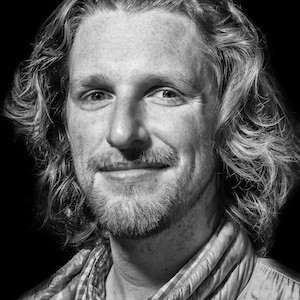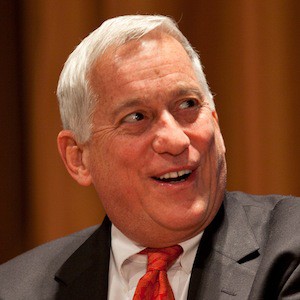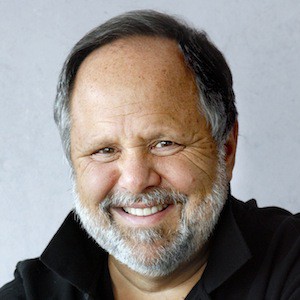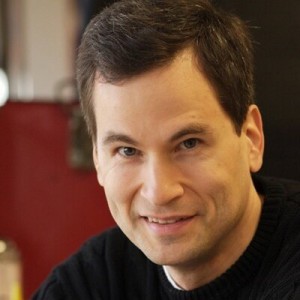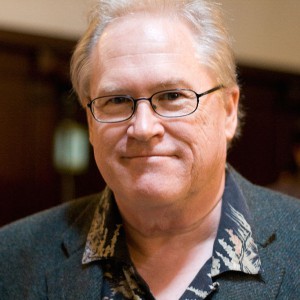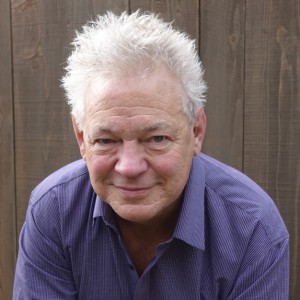John Huey: Could you just begin by telling us when the light came on and when you realized that the Internet was going to change you and your life? Also, when it was going to change. When you decided to turn it into, I guess you would call it journalism, and then when you realized it was going to change journalism.
Arianna Huffington: I’ve always been a writer. Ever since I left college and before, I wrote my first book at 23. My whole life was revolved around writing, books, articles. I never worked for a newspaper, but I always wrote for newspapers, for magazines, in England where I started my writing and journalistic career. That was in the ’70s. I came down from….
John: What kind of things would you write? For what newspapers?
Arianna: I would be writing about politics, culture, everything from the London Times to Punch, and always writing books at the same time. Again, my books ranged from big cultural issues, like the changing role of women to biographies of Maria Callas and Pablo Picasso, too, to books on politics, including my latest, “Third World America.” All these years, I continue to write, speak, and communicate. As soon as I began to see what was happening online, which was really in the mid ’90s…
John: What first got your attention online? Do you remember?
Arianna: I don’t remember the first thing that got my attention. But what fascinated me was the engagement, the fact that writers who are no longer just writing and leaving the scene, but staying there to engage with the readers, and that the readers had a voice. Whether it was in chat rooms or forums or the early versions of what was happening online, something new was happening.
John: Where were you at the time and doing what?
Arianna: At the time, I had just moved from Washington to Los Angeles after my divorce, I had moved with my two daughters. That was 1997. I had this syndicated column which started in ’96. I created a website, my own website, called “Arianna Online,” and engaged with my readers. My columns would go up, they would comment, I would comment back.
John: Were you thinking about it entrepreneurially at the time?
Arianna: No. I was just thinking of it as an extension of my journalism. I was writing two columns a week, and I wanted to begin to communicate with my readers. Not just read it in the newspaper. In the LA Times, or any of the other papers where my column was syndicated.
John: You liked the fact that it talked back?
Arianna: Yes. I liked the fact that it talked back, exactly. Also, I began to see how many of the people that I admired, were not going to do that. They were not going to go online.
John: Like?
Arianna: Like Arthur Schlesinger, I remember talking to him and thinking, “Here’s a great historian. A lot is happening right now, that I’d love to know what he’s thinking in real time.” It’s not going to happen, because he’s writing a book, which turned out to be his last book, and he’s not going to start a blog, or go online. It’s not just a different generation, a different mindset, a different sensibility. I remember, in fact, when we decided to launch the Huffington Post, the first person I invited to blog was Arthur. I remember calling him, and asking him, and he said, “What’s a blog?” I tried to explain, and he said, “Let me take you to lunch, and you can tell me about it.”
I remember we went to lunch at the Century Club, which was very ironic, that Arthur, Alexandra, and I at the Century Club. We were probably the youngest people there. [laughs] He’s now dead, and I’m no spring chicken, and I explained to him. He talked really guarded, and he said to me, “I barely use a computer.” He said, “But I can fax you my blogs.”
[laughter]
Paul Sagan: Perfect.
Arianna: That’s what happened. I remember when I told that story somewhere, and some blog in Silicon Valley said, “If it’s not on MT [Moveable Type], it’s not a blog.” I said, “No. If it’s sent by carrier pigeon, it’s a blog.” A blog is somebody’s thoughts in real time, in a conversational way, and that’s exactly what he did.
John: He would send it to you, and you would type it in, or have somebody type it in?
Arianna: Yeah.
John: Then you would…
Arianna: Post it.
John: That’s funny.
Arianna: I remember his first one. When George Bush, who was then President, gave a speech that referenced the Yalta Agreement, and Arthur had been heavily involved in it, so my fax machine, I was in LA at the time still, the fax machine was near my desk, and I picked up Arthur’s blog challenging Bush’s interpretation of the Yalta Agreement. He loved it, because it took him like 15 minutes to put it down. It was like a little interruption from his real work, which was his book.
The same thing happened with Norman Mailer, and people like that whom I reached out to, to bring into the online conversation.
John: You started collecting big thinkers that you admired, and luring them into your orbit of the blogosphere?
Arianna: Of the online conversation. That was one of my motivations behind launching the Huffington Post, was the conversation that was moving online. Some of the most important voices of our time, were not going to be going online, unless it was made real easy for them.
John: Your vision was more like a salon?
Arianna: It was more like impacting the conversation that was happening nationally.
John: You’re going along, and you have your blog, and you have these participants.
Arianna: No, no. Arthur, and Norman, they were not participants on my blog. They were participants in the Huffington Post.
John: This is after you started?
Arianna: Yes. That was after we started.
John: When did you start the Huffington Post?
Arianna: ’05, May, ’05. Everything I’m saying, my outreach to important and interesting voices, was not for my blog.
Paul: You had, adjusting the time sequence, more than 5 years then, almost 10 years of your own blogging?
Arianna: I would say, five, or six years…It was not called blogging as much at the time, but it really was, yes.
Paul: A website.
Arianna: It was a website with a forum and a chat room. Campaigns, I remember when Harry Shearer and I started a campaign called Partnership for a “Poll Free America.” We thought polling was taking over the political discourse.
John: How’d that work out?
Arianna: It was actually great. We did, we had…
John: In terms of doing away with polls?
Arianna: We totally failed in that. But it was a great response from the public. Actually, one part that succeeded, not because of us, because of technology, was we had asked people to hang up on pollsters. We thought that the one thing, we could not dry up the demand for polls, but we could dry up the supply of polling information.
John: There’s the disruptor. Now, you’re disrupting.
Arianna: Yeah, but I was invited to speak at a polling conference.
John: Before you started Huffington Post, which was in ’05, you had what kind of audience, size wise? Not for your books, but online. As an individual, what kind of audience were you dealing with?
Arianna: I absolutely had no metrics, that’s another thing that changed.
John: Was it substantial, or was it just a…?
Arianna: I wouldn’t say it was substantial, no. It was…
John: Mostly people you knew, or…?
Arianna: No, it was people who read my column, because at the bottom of my column would be the website. I had asked my…
Paul: See it on print…
Arianna: Yes, exactly. Or I would be on television…. [Interruption.]
John: … Because the story of “The Huffington Post” founding has been told a lot and pretty well told. But let’s back up anyway. You’re going along and blog technology is on the scene now. Are you looking at other bloggers before you launched the post? Just tell us how this happened.
Arianna: How it happened is that I was introduced by Tom Freston to Kenny Lerer, who was also very interested in what was happening online from the point of view of changing minds, affecting the national conversation. He was doing at the time in terms of gun control. He had setup an online movement around gun control.
We met, and started talking about doing something online together that would combine where we thought the media was going and our own interests. That’s why what we decided we wanted to combine was my interest in having a collective blog, a big collective blog with both well known voices and new voices.
Anybody who had something interesting to say or really wanted to mix it up. Also news aggregation. Basically, bringing what we considered the best of the web to our readers.
John: Where were you in the process of aggregating? Were you borrowing out idea from elsewhere, or was this…Who else was aggregating at the time?
Arianna: Drudge was pure aggregation, and others.
John: That’s right.
Arianna: Drudge didn’t have the blog.
John: He just aggregated.
Arianna: Drudge was like the first major aggregation pioneer. We combined aggregation…
John: This is Drudge plus?
Arianna: It was aggregation. It was Drudge plus three other elements. The collective blog, the community, because from the beginning, we made it very easy for people to comment. But the comments were pre moderated. It was again an innovation. We wanted to eliminate as much as possible the worst aspects of the Internet.
John: You were setting out at this point, now you’re saying…You have Kenny Lerer, and Betsy Morgan…
Arianna: No, Betsy was not involved at the time.
John: When did Jonah Peretti and Betsy Morgan and those people come… [crosstalk]
Arianna: Kenny and I founded the company, which raised a million dollars. It was not just like a two million dollar investment. Kenny brought Jonah to work on the technology, and I brought Roy Sekoff to work with me on the editorial. Also, we brought in Andrew Breitbart, who was working with Drudge, to work with us on the aggregation, and Colin Sterling who worked with me at the time to be the first blog editor. That was the original team. Betsy didn’t come until I think three years later.
John: That’s when it had become a bigger business.
Arianna: Yes, exactly.
John: I know you don’t have a voice, but…
Paul: It would be helpful I think to talk about how the content evolved and the audience evolved and grew, and then where the business model came from. Or if you started thinking you knew the business model, and either it worked or it changed.
Arianna: Just one more thing, the fourth element was original reporting. Which we knew we wanted to make…It was part of the template. But at the beginning we didn’t have the money yet, so we started with our first paid writer was Harry Shearer, who was doing a great column called “Eat the Press,” which was really on the media. We knew a few things from the beginning. One was that The Huffington Post was always going to be free. There was never going to be a subscription model. Therefore, it had to be advertising sustained. But the first year, we didn’t even try to sell advertising because we didn’t have the scale.
As soon as we had the scale, then we started selling advertising and doing a lot of innovations around advertising. Again, always keeping the Chinese Wall between content and advertising, but we had sponsor generated blogs clearly marked as sponsor generated blogs.
Then the more interesting innovation that we’ve actually taken to the next level here was content platforms for brands around their causes. Like Johnson & Johnson sponsoring an entire section on their cause, which is global maternal health.
You go to The Huffington Post because it’s been renewed now and it says, “Global Motherhood, Sponsored by Johnson & Johnson.” This was a way to monetize what we’re doing at a higher level.
John: Once you start monetizing it and a good percentage of HuffPo in the early days and even today is built around aggregation of other people’s content, and you’ve become very controversial at this point. Because you’re making money off their content and issues of fair use and all that [inaudible 06:40] .
Arianna: Only by people who didn’t understand the model.
John: Defend the model. Let’s say I’m the New York Times and I write a story, and you run a large chunk of it…
Arianna: We never did. That’s the point.
John: Which is either you linked out to it…
Arianna: Yes, I think that the whole essence of this model is fair use. Our editors get not just the big training on fair use when they start if they’re on the aggregation side of the business, and regular refreshers. But the key is fair use, and in fact we get hundreds of requests every day from the New York Times, from the Washington Post, from NPR, to link to what they’re doing because it drives traffic to them.
John: No, I know. We always needed to be linked, but tell me about that period. Because it got pretty hostile during that period.
Arianna: I think the hostility had a lot to do with blogs, too. You may remember a lot of well known journalists making fun of blogs as something that the great unwashed did in their parent’s basements. I think their hostility was about not understanding where the world was going. It was a much deeper one that just about aggregation. If you go back now and read Bill Keller on blogs, it’s kind of embarrassing, given that now, you have advertising for the New York Times that assure their readers that the people they like will also be blogging for them. Not just writing columns or reported pieces, but that’s where the world was at the time.
Paul: We saw Andrew Sullivan yesterday, he […] confirmed that [he] blogged in the basement in his boxers. [laughter]
John: He said that’s the only consistent thing.
Paul: But it does imply that you stood on other shoulders, or blogging did, right? What the aggregation piece did. The old “you had to be there” for something to be aggregated. So you built on top…
Arianna: Absolutely. I always made the point that I wanted The Huffington Post to be the best of the old and the best of the new. It was never rejecting great journalism.
Paul: Talk about how you went from one paid writer or new content to building a new staff and how you think about that. Did the lines cross yet, and there’s new than aggregation. Where do you think that path goes?
Arianna: The line has definitely crossed. We now have 1,500 stories, tens of thousands of bloggers and we are at the moment in six countries, and will be in Japan, Brazil, and Germany also before the year is out.
John: How many verticals?
Arianna: 70 verticals. Now basically one of the changes for us was we went from one section, which was politics, news, but also culture, entertainment. We always mixed high brow and low brow. Now, we went to 70 to 80 sections, in that range, from weddings, divorce, all the lifestyle sections to culture and the arts, to black voices, Latino voices, et cetera. Basically covering everything that our readers might be interested in.
But also having a very specific editorial stance. All our lifestyle sections have been brought together under the theme of less stress, more living. We are prioritizing.
John: How would you describe your personal political beliefs, philosophies, in writing vis à vis the persona of The Huffington Post?
Arianna: Actually, absolutely aligned. The persona of The Huffington Post is very clearly beyond left and right, is how we call it. We’re not cheerleading for either party. We have been very critical of Obama for example, on drones, on Afghanistan, and not prioritizing job creation. We always look for where there are strange bedfellows, because they make our point which is that all the big issues of our time are not easily divisible into left or right.
This is just a lazy…
John: You actively personally oversee, direct most of the political coverage, or the tenor of the political coverage? Is that Arianna Huffington?
Arianna: Yes, but I’m very aligned with our editors. There’s no…
John: You hired them.
Arianna: Yeah, exactly. I hired them. I work with them all the time. It’s not like there’s any conflict.
John: As Roger Ailes is to “Fox News,” you are to HuffPo?
Arianna: No, because I revere facts.
John: That’s an argument for another day, but I’m just saying this is your personal philosophy and political stance, as that thing. You confirmed that. So HuffPo…
Paul: Could I ask a question?
John: Go ahead.
Paul: As you described it as wide and broad… [i]t sounds like you’re describing a network, a content network, which a lot of people tried before blogging. Major media companies tried it online, it didn’t work very well. Arguably even the portals tried it and only search worked to create both an audience loyalty and a business model. What’s different about adding aggregation and blogging that seems to work? Because it seems to work differently and successfully in this model where it didn’t for the first 10 or 15 years before that.
Arianna: I think what worked for us is being a pure player, being only online and…
Paul: Did that free you from other obligations, or did it force you to just innovate?
Arianna: I think it, A, forced us to innovate constantly. We never said, “This is The Huffington Post, that’s it. We’ll put a bow around it and maintain it.” Including today, we’re always about what’s the next thing we’re going to be innovating on. That’s why we launched “HuffPost Live,” which is disrupting television which see everywhere.
John: Where is that?
Arianna: Downstairs, we’ll take you.
John: We were wondering, is that web only? Where does that air?
Arianna: It’s at the moment web only, but we’re about to announce a cable deal. Also, it works both 12 hours a day live, but also we take the best of what we saw every day and we put it as video pieces. Short video pieces all the around the site. To your question, I think being only online meant both had to be constantly innovating, but also that we prioritized engagement. So our relationship with our readers was always at the center of what we were doing, it was not an afterthought.
Even for David Wood’s 10 part series on returning vets which won the Pulitzer, at the end of each of David’s stories was a call for more stories from the readers. Which were then integrated in the next story and videos from the readers.
That was always a big part of everything we did. Whether it was politics or how do you parent, or how do you get married with less stress. It was all integrated.
Paul: Do you think the audience engagement rather than aggregation was the key difference that worked, that helped it take off?
Arianna: Definitely, I think audience engagement. Also the fact that we stayed on stories. We realized that one of the things that was different about the web was that traditional media would often break an important story on the front page, or the cover of Time, and then abandon it there and move onto another story.
We stayed on stories. Like our opposition to the war in Iraq. That was an obsession. We stayed on it, we developed it, we found new ways. Both new facts and new interesting views, etc. The same with Afghanistan or job creation.
Then another part I think that has really helped is that we also believe it is the role of the media not just to put the spotlight on what is dysfunctional, but to put the spotlight on what is working.
John: You mentioned the Pulitzer. Beyond the obvious significance of that, in that you win the highest award in journalism for your efforts, which by the way magazines are not eligible for. But somehow The Huffington Post is, which is a sticking point with some magazine editors.
Arianna: I know. It should be changed.
John: Yeah, well, that argument has been made and not heard. Talk about what that meant to you personally and to your staff? What does that say about what the mainstream traditional journalism community has decided about the state of blogging. It seems like a watershed event to me. Was it to you?
Arianna: Yeah, it definitely was. Yes. It was a great moment. We celebrated it here in the newsroom. It was a great moment because we had invested a lot both financially and emotionally in original journalism, in long investigative series. We never saw any contradiction between doing that and also aggregating, and being a blogging platform. These are sort of three different pillars that…It will stop, don’t worry.
That made The Huffington Post plus engagement, which is over everything. It was a great basically testament to the fact that our original vision had reached a certain maturity and was validated.
John: If nothing else, it’s a good short answer to, “Are we journalists?” We won the Pulitzer Prize. Talk about AOL. AOL obviously saw a lot of value in your business, they gave you a lot of money. [interruption]
John: AOL obviously saw a lot of value in your business, and in you. They not only paid you a lot of money for the business, they brought you in to run a big part of their content business. How did that change you and Huffington Post, and AOL, and how do the two brands coexist now? AOL is a pretty [big] brand in its own self, as are you. Just talk about that.
Arianna: The great thing for the Huffington Post was that we actually finally had the resources to grow in multiple areas that I wanted us to grow in at the same time, instead of sequentially. Which is how we were growing at the beginning as we’re making more money, we will be able to invest in more journalists or more video or in expanding abroad. With AOL being a great parent company that basically within a few months, it was clear that the best model was for us to be left alone to run The Huffington Post.
Meet our objectives, stay within our budget, and then AOL would invest in the areas that we would decide were the biggest growth areas. They invested in HuffPost Live, which was a….
John: In what? I’m sorry.
Arianna: HuffPost Live, you know…
John: OK.
Arianna: Video TV series. They invested in growing internationally, so within the first two years we were in six countries. They invested in original journalism. We were able to…
John: That brings us to a really important question that we ask everyone, is the question of is there a viable model at scale for profitable news? We know it’s profitable to start The Huffington Post and grow it and sell it. Is it long term scaleably profitable as a business?
Arianna: Yes, absolutely.
John: Shed some light on that. Are you profitable now on an operating basis?
Arianna: Right now, we are not segmented in terms of P&L.
John: But are you in an investment mode or a profitable mode?
Arianna: I think we are in investment mode in some areas like HuffPost Live, like international, and in profit mode in other areas. I think it’s both which is exactly how we can continue to innovate and grow in areas that we think are going to be even more important in the future. But I absolutely believe, and the facts are here, that advertising is moving more and more online. Especially as we’re getting clear metrics of what’s working and what’s not working. Especially as advertisers want to engage more and more with their readers and social is becoming more important.
John: But the value of digital advertising is declining. It’s true that advertising dollars are growing digitally, but it’s also true that Google now has almost half the dollar value of advertising. And your business is built entirely on digital advertising.
Arianna: Right, although we definitely do the banner ads and the CPM measured advertising, the most profitable part of our advertising are sponsored content platforms. I mentioned…
John: Johnson & Johnson.
Arianna: Johnson & Johnson, we have a section with TED, in partnership with TED, where we do “TED We Can.” We take the most interesting TED speeches and we go deeper over it sponsored by Chevy Volt. We have an impact section sponsored by Cisco, which actually won an advertising innovation award last week. We have an IBM section, we have a lot of sections like that which are all six figure deals. Or seven.
Paul: Do you keep the editorial control? You talked about a church state, Chinese Wall model.
Arianna: Yes.
John: Is the editorial vague there, or is it clearly the advertiser just pays but they don’t control the content?
Arianna: It’s clearly demarcated. If the advertiser is running the control, is running the editorials, then it’s not run by us. It’s clearly marked.
John: So you mark it?
Arianna: Yes.
John: But they can buy that if they want?
Arianna: If they want to create a section for their own content, but it’s clearly marked it is their section and they are running it, then our editors don’t touch it. It’s their section.
John: I have two uber questions, because we’re running out of time here. One is, what do you think is the most significant lasting influence of the growth and development of The Huffington Post on the rest of the journalism industry?
Arianna: The fact that The Huffington Post put together, what we put together in ’05, is significant because at the time it was very disruptive. Not disruptive in what happened to newspapers, I don’t think that we’re responsible for the trouble newspapers had. I think…
John: It’s Craig’s fault.
Arianna: Craig’s fault, and also the fact that newspapers did not recognize the importance of what was happening online early enough. Because if they had, they would have left no room for The Huffington Post to exist. They left a vacuum into which we stepped. But I think that right now there’s a convergence, I think what is most interesting to me is the convergence between mainstream media doing more and more great things online, the New York Times is doing wonderful things online with infographics, with social media.
The Huffington Post is doing more and more traditional journalism with investigative reporting, in multiple areas, and we just finished sending 26 reporters across America to write about the new poverty, the decline of the middle class. All those things which…
John: Is this your book on steroids? This is taking each chapter…
Arianna: The “Third World America” on Steroids, yeah. [laughs]
John: My last question is take us five years out and tell us about Huffington Post and the journalism industry, the news industry, and you. Where is this headed?
Arianna: Five years from now, we want to be in all the major countries in every major language.
John: You’re a global multilingual media company?
Arianna: Which is amazing for journalism, because we are covering the resignation of the Pope, and the new Pope, has been an incredible demonstration of what we can do because we have a great Italian team of editors.
Paul: In Italian for an Italian audience, or in English?
Arianna: Entirely Italian. All our international editions except the UK and Canada are partnerships with a big media partner, like the Espresso Group in Italy, or El País in Spain, Le Monde in France…
John: Are these joint ventures or licenses?
Arianna: Yes, they’re all joint ventures.
John: Do you have one in Greece?
Arianna: No, but we’re working on it.
John: I would think.
Arianna: Yeah, they’re all 50 50 joint ventures. We both choose the editorial director. All the journalists are local, and it’s a completely…
John: This is a partnership between AOL and…
Arianna: And the local group.
Paul: I have one last question. Because you’ve bet the farm if you will, on advertising, and we’ve heard people they’re betting the farm the other way. Which is they don’t think advertising will work and it’s going to be subscription. You can see some of the mainstream has gone to the paywall, or even some of the bloggers are trying to go to a leaky paywall as they call it. Do you think both models are going to work?
Arianna: Yes.
Paul: Or do you think one bet’s right and one’s wrong?
Arianna: No, I think both models will work depending on the brand. You have to make trade offs. The New York Times, actually they run great ads for subscriptions. Their trade off is they’re not going to grow as fast. We were able to overtake them in unique visitors, I think partly because they are now emphasizing the paywall. There are trade offs.
I think they probably made the right choice for them because it’s The New York Times. People are used to paying for it. They have a very loyal audience and the people like my daughter’s generation who can get around the paywall.
I was telling Arthur that, “My daughter knows how to get around the paywall! What are you going to do about that?” He said, “I know. We’re allowing it. There’s going to be this one and a half percent that they’re going to bother to get around the paywall and know how to do it.”
Theirs is also a leaky paywall. It doesn’t start immediately, et cetera.
Paul: It allows for social and for sharing.
Arianna: It allows for social and social sharing, et cetera. But there are trade offs. I mean obviously our social and sharing is very, very robust because we don’t have any restrictions. Also our SEO is very robust, and what we’re seeing is that what is very hard for a new site to do is to become a destination site. But we’ve been able for example to launch new sections of The Huffington Post and make them number one.
Like our Gay Voices section is the number one gay site.
John: Wouldn’t you say, and I shouldn’t go back, this is going back, I should have asked it might earlier. But wouldn’t you say one of the things that drove HuffPost’s early growth was you were so good at SEO, and so much better than most of the other people in the space?
Arianna: I think it was always a combination. I think that…
John: But you were good at it.
Arianna: We still are. We won for example election night, many terms because we’re very good at SEO. But we’re also very good at social and we know how to drive people to the front page, too. Because our editors are trained to do headlines that attract readers, and they want to come back three hours later to see what’s the new splash. When we launched The Huffington Post splash, which is now a bit of a trademark…Yeah.
Paul: Thank you.
Arianna: The assumption was that’s not going to work because you need to put as much as possible above the fold, as many stories as possible to get as many clicks as possible. We proved that in fact it’s better to have a big splash that creates a sense of drama around the news, and then people will go further down, they’ll click on the other stories.
Paul: You uncluttered it.
Arianna: Yeah, we uncluttered the top.
John: Since this is living history and it’ll be revisited, anything we haven’t asked you that you’d like to talk about?
Arianna: I want history to know that I interrupted this interview twice to talk to my daughter, which is my one rule that everybody here knows. [laughs]
John: I think history will know that.
Paul: That’s a good rule.
Arianna: I just want to make it clear in this world of women trying to drive our careers and parenthood, that parenthood comes first.
John: Let’s hope all that comes out right.
Arianna: [laughs]
Paul: Very good.
John: Thank you very much.
